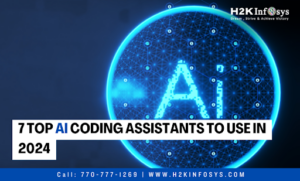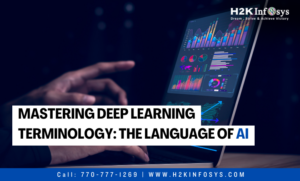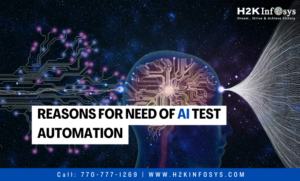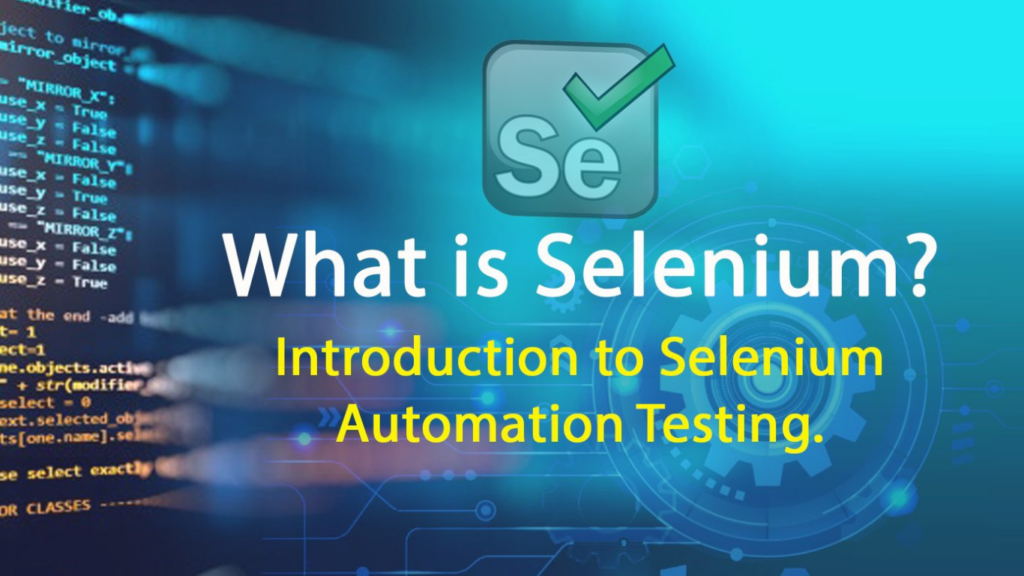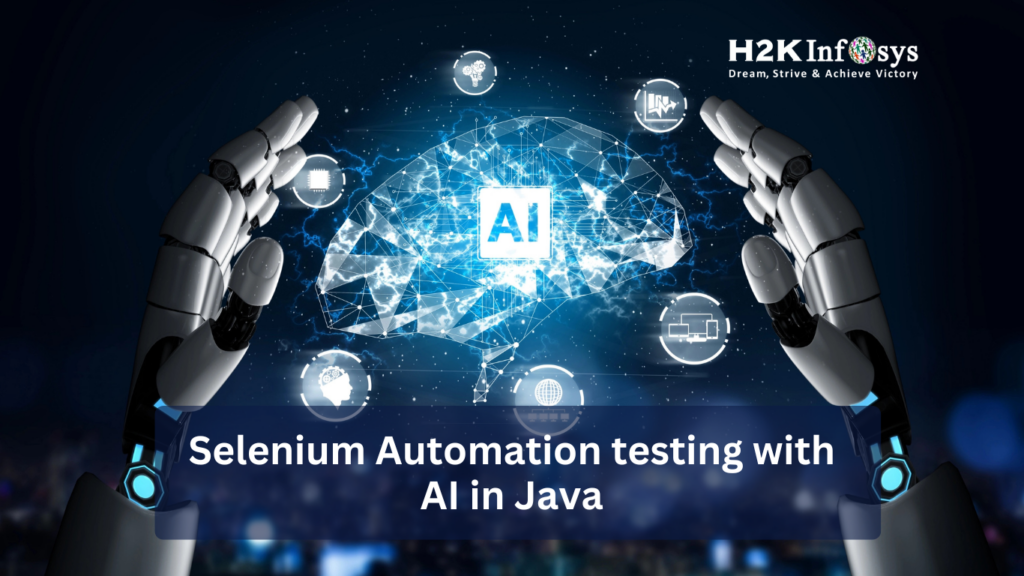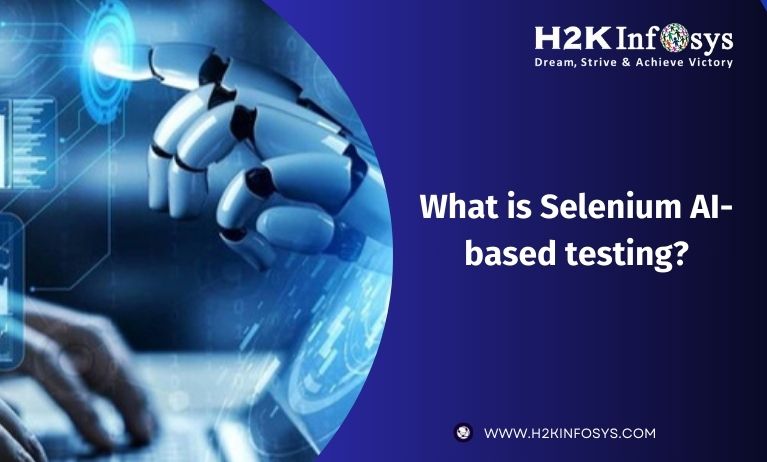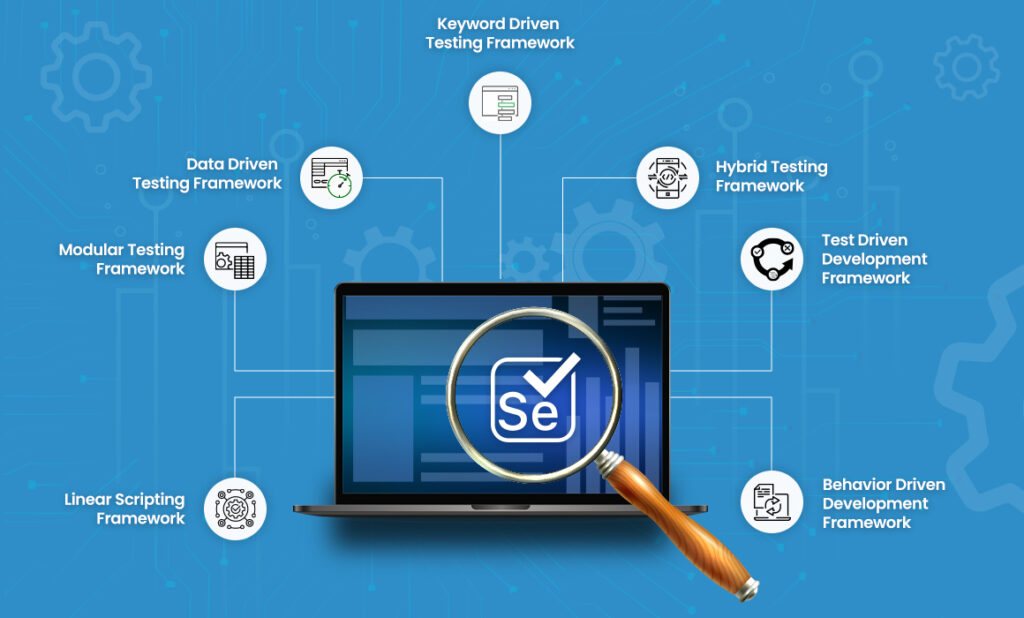Over the past six months, artificial intelligence (AI), a fast developing technology, has gained global attention. We’ll give a basic overview of artificial intelligence (AI) in this article for total beginners. Check out the Artificial intelligence online training to learn more.
Artificial Intelligence What is it?
Fundamentally, artificial intelligence (AI) is the creation of computer systems capable of carrying out operations that would normally call for human intelligence.
We can develop useful technologies with AI that can:
- Comprehend and communicate with us: Artificial intelligence is capable of comprehending human language and assisting us through dialogue, suggestion, and question-answering.
- Learn from experience: Like humans, artificial intelligence (AI) may learn from data and examples to become more proficient at activities over time.
- Predict: Artificial intelligence (AI) is able to examine data and identify patterns and trends, which enables us to forecast future occurrences or results.
- Recognize images and sounds: Artificial intelligence (AI) can recognize objects, people, or animals in pictures and comprehend spoken words or music. This is useful for jobs like image search and speech transcription.
How does AI work?
Put simply, artificial intelligence functions by imitating human thought and learning processes. Algorithms are computer programs that function as rules or instructions that the computer follows to solve issues or finish tasks. AI uses these programs to accomplish this.
The process of machine learning is a key AI method. This is the process by which computers learn how to perform things on their own without explicit instructions by examining examples and identifying patterns. Consider a young child who is learning to identify animals. To do this, they study numerous images of the animals and take note of their characteristics, such as their tails, ears, or colours. In a similar vein, AI is able to learn from vast amounts of data, such as text or photos, and get better over time as it processes more data.
Why is AI suddenly so popular?
For artificial intelligence to function, large amounts of data are needed. Gathering and arranging this data into a machine-readable structure can take a while. Furthermore, sophisticated AI needs a lot of processing power, which was just recently achievable. It’s now possible to handle the enormous volumes of data needed for AI to operate thanks to ongoing technological advancements.
What is ChatGPT and how does it work?
OpenAI created the ChatGPT AI language model, which is intended to produce writing that resembles that of a human depending on the input it gets. It functions by first analysing and comprehending the context of a given text, such as a statement or question, and then producing a response that is both pertinent and logical.
Based on its understanding of the context and its training data, ChatGPT predicts the words or phrases that are most likely to be used next in a sentence when you engage with it. Until a comprehensive and coherent response is produced, this procedure is repeated.
Apart from ChatGPT, OpenAI also offers a product called DALL·E 2, which is capable of producing artwork and graphics from written descriptions.
In a deal that also makes Microsoft the exclusive supplier of a large portion of the processing power needed to enable initiatives like ChatGPT, Microsoft has invested over $10 billion in OpenAI.
What is Bard?
Google has created a chat service called Bard that is designed to work similarly to ChatGPT as their entry in the AI competition. The primary distinction between the two is that Bard will obtain its data straight from the internet, perhaps enabling it to deliver solutions that are faster and more fresh. However, ChatGPT can only extract data from its training set, which only extends to September 2021 at this time. A beta version of ChatGPT is now available to test the capability of extracting more recent data directly from the web).
Google claims that Bard is currently accessible in more than 180 nations and territories, with more to follow shortly.
How can AI benefit me?
1.AI-powered chatbot
AI chatbots are sophisticated virtual assistants that can reply to user questions in a manner akin to that of a human. For instance, ChatGPT works similarly to a chatbot that you may ask to repeat responses from earlier in the conversation while interacting conversationally.
Using ChatGPT’s technology or their own data models, other businesses can likewise create their own chatbots. For instance, the Quora team recently released Poe, a new AI chatbot software. It enables users to create chatbot responses using several AI chatbots, such as Anthropic and ChatGPT.
With just a few simple steps, Poe’s most recent release allows customers to create their very own personalised AI chatbot that is powered by some of the most potent AI models available and can reply to you exactly as you like.
2.AI to assist with coding
GitHub launched GitHub Copilot, a partnership with OpenAI, in June 2021. Similar to how Gmail proposes words and phrases while you compose an email, Copilot automatically suggests complete lines or blocks of code as you type, helping you write code more quickly. Copilot has the potential to significantly improve your code writing speed, lower the amount of mistakes you make, and even introduce you to new code libraries and functions.
3.AI as a content generator
AI is a useful tool for content creation and idea generation. It’s similar to having a creative assistant who can help you come up with ideas or even produce tales, articles, or social media updates. In order to provide recommendations or produce new content, artificial intelligence (AI) analyses a vast amount of data.
Currently, a number of tools provide this feature, including ChatGPT, Craft’s AI Assistant, and platforms made specifically for content production like JasperAI.
4.AI translation tools
Google Translate is a well-known app that many people have likely used while travelling overseas. Deepl is an additional AI translation tool that is becoming more and more dependable. AI is used by these programs to learn from a large number of translated text examples. After determining the grammar and syntax of each language, the AI uses this understanding to translate words and phrases from the source language into the target language.
It is now easier than ever to communicate and navigate while travelling overseas because of technological advancements that enable these products to translate speech or visuals in addition to textual text.
5.AI transcription tools
AI transcription tools come in very handy for many different jobs, such creating written papers from podcasts, seminars, and interviews. They are more precise and effective as technology develops, saving time and effort for both individuals and corporations. These devices function by utilising artificial intelligence (AI) to translate spoken language into printed form. A few of the most well-liked AI transcription tools include Descript and Otter.ai.
Conclusion
To learn more about Artificial intelligence, check out the online Artificial intelligence course.









